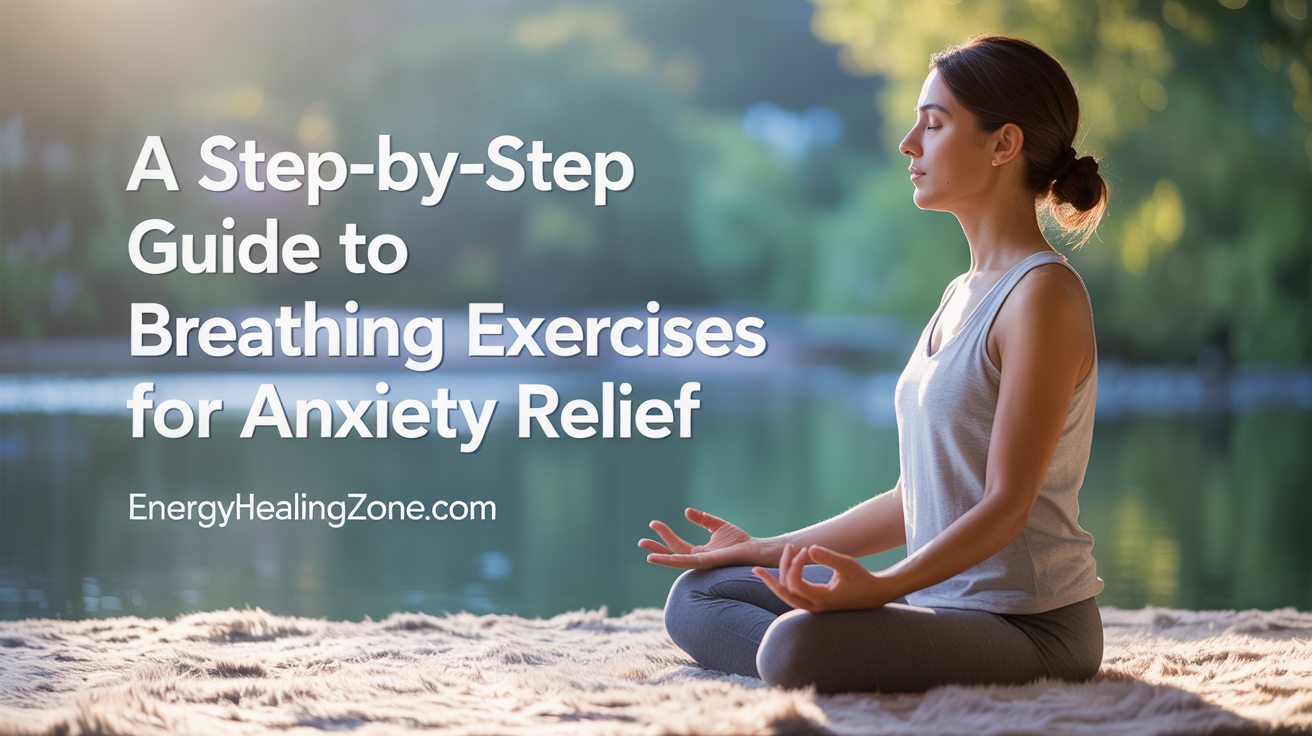Anxiety affects millions of people worldwide, manifesting as racing thoughts, rapid heartbeat, and overwhelming stress. While therapy and medication can help, breathing exercises for anxiety offer a natural, immediate way to regain control.
Scientific studies confirm that controlled breathing activates the parasympathetic nervous system, reducing cortisol (the stress hormone) and promoting relaxation. This guide explores 10 powerful breathing techniques, their benefits, and how to practice them correctly for maximum anxiety relief.
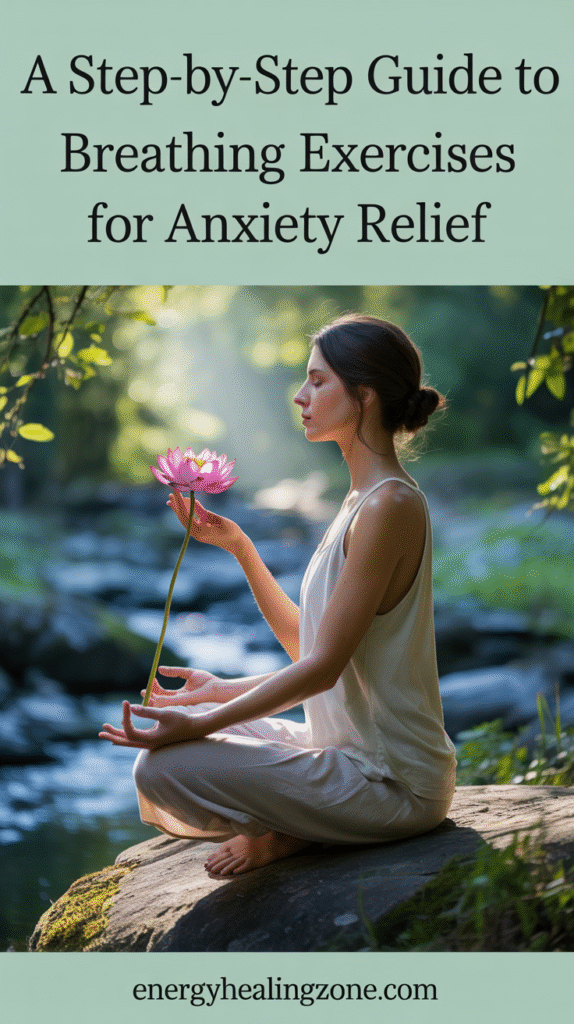
Why Breathing Exercises Work for Anxiety
Before diving into the techniques, it’s important to understand why breathing exercises are so effective:
- Slows Heart Rate: Deep breathing signals the brain to relax, lowering blood pressure.
- Reduces Cortisol: Controlled breathing decreases stress hormones.
- Improves Oxygen Flow: More oxygen to the brain enhances focus and clarity.
- Grounds the Mind: Focusing on breath distracts from anxious thoughts.
A 2017 study in Frontiers in Psychology found that slow-paced breathing significantly reduces anxiety symptoms within minutes.
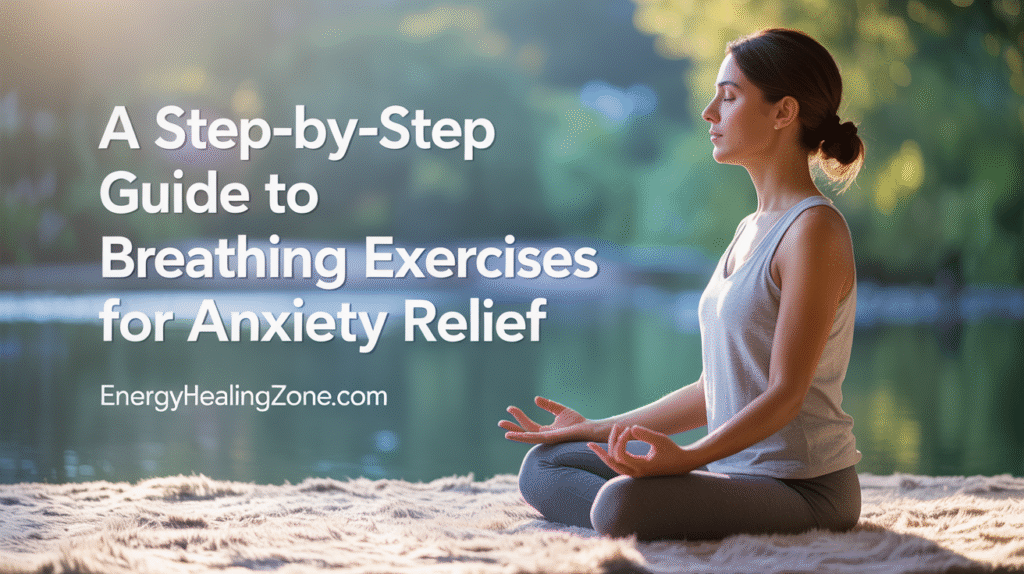
10 Best Breathing Exercises for Anxiety Relief
1. Diaphragmatic Breathing (Belly Breathing)
Best for: Instant relaxation, panic attacks
How to do it:
- Sit or lie down comfortably.
- Place one hand on your chest, the other on your belly.
- Inhale deeply through your nose, letting your belly rise (chest should stay still).
- Exhale slowly through pursed lips.
- Repeat for 5-10 minutes.
Science: Activates the vagus nerve, which calms the nervous system.
2. 4-7-8 Breathing (Relaxing Breath)
Best for: Falling asleep, acute anxiety
How to do it:
- Inhale quietly through your nose for 4 seconds.
- Hold your breath for 7 seconds.
- Exhale completely through your mouth for 8 seconds.
- Repeat 4 cycles.
Why it works: Forces the body into deep relaxation by extending the exhale.

3. Box Breathing (Navy SEAL Technique)
Best for: High-stress moments, focus
How to do it:
- Inhale for 4 seconds.
- Hold for 4 seconds.
- Exhale for 4 seconds.
- Hold again for 4 seconds.
- Repeat for 5 minutes.
Used by: Military personnel to stay calm under pressure.
4. Alternate Nostril Breathing (Nadi Shodhana)
Best for: Balancing emotions, mental clarity
How to do it:
- Close your right nostril with your thumb, inhale through the left.
- Close the left nostril, exhale through the right.
- Inhale through the right, then switch.
- Continue for 5-10 minutes.
Benefits: Balances the left and right brain hemispheres.
5. Pursed-Lip Breathing
Best for: Shortness of breath, panic attacks
How to do it:
- Inhale slowly through your nose for 2 seconds.
- Pucker your lips (like blowing a candle) and exhale for 4 seconds.
- Repeat for 3-5 minutes.
Effect: Slows breathing rate, prevents hyperventilation.
6. Lion’s Breath (Simhasana Pranayama)
Best for: Releasing tension, anger
How to do it:
- Inhale deeply through your nose.
- Open your mouth wide, stick out your tongue, and exhale with a “haaa” sound.
- Repeat 3-5 times.
Why it helps: Releases facial and throat tension.
7. Resonant Breathing (Coherent Breathing)
Best for: Long-term anxiety management
How to do it:
- Inhale for 5 seconds.
- Exhale for 5 seconds.
- Continue for 10 minutes.
Research: Shown to improve heart rate variability (HRV), a marker of stress resilience.
8. Humming Bee Breath (Bhramari Pranayama)
Best for: Calming the mind quickly
How to do it:
- Close your ears with your fingers.
- Inhale deeply, then hum like a bee while exhaling.
- Repeat 5-7 times.
Effect: The vibrations soothe the nervous system.
9. Progressive Relaxation Breathing
Best for: Full-body relaxation
How to do it:
- Inhale deeply, tense a muscle group (e.g., fists).
- Hold for 3 seconds, then exhale and release.
- Move through each muscle group.
Benefits: Combines breathwork with muscle relaxation.
10. Morning Breathing Routine
Best for: Starting the day stress-free
How to do it:
- Stand up, bend slightly forward from the waist.
- Inhale deeply while slowly rising back up.
- Hold for 3 seconds, then exhale while bending again.
- Repeat 5 times.
Why it works: Releases overnight stiffness and stress.
How Often Should You Practice?
- For immediate relief: Use any technique for 3-5 minutes when anxiety strikes.
- For long-term benefits: Practice 10-15 minutes daily.
Final Thoughts
Breathing exercises for anxiety are free, portable, and scientifically proven to reduce stress. Whether you need instant calm (4-7-8 breathing) or long-term resilience (resonant breathing), these techniques can help.
Try one today and notice the difference!
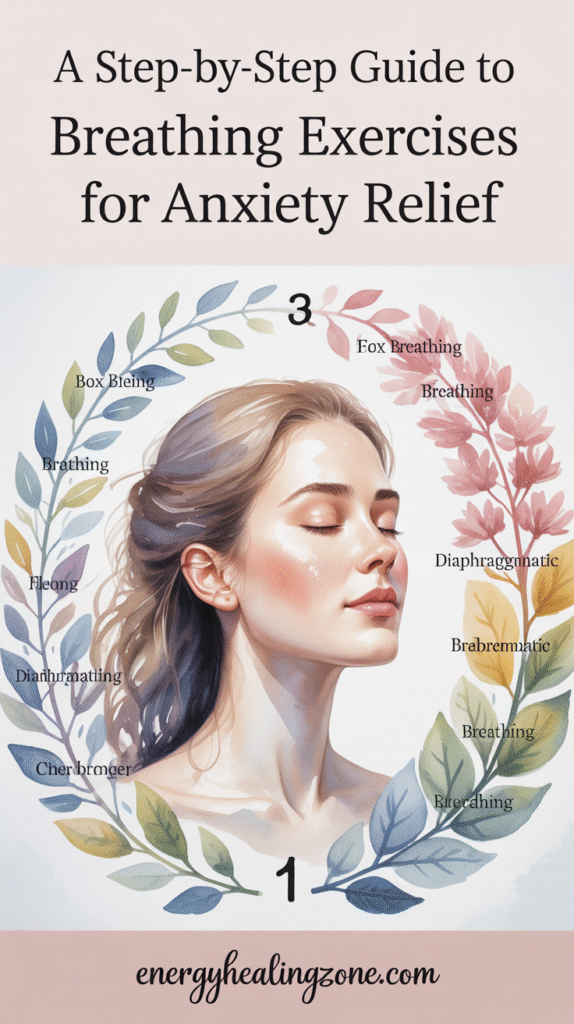
FAQ
Q: Can breathing exercises replace anxiety medication?
A: They can help but consult a doctor before making changes.
Q: Which exercise is best for panic attacks?
A: Pursed-lip breathing or 4-7-8 breathing work fastest.
Q: How long until I see results?
A: Some techniques work instantly; others show benefits in 2-4 weeks of daily practice.
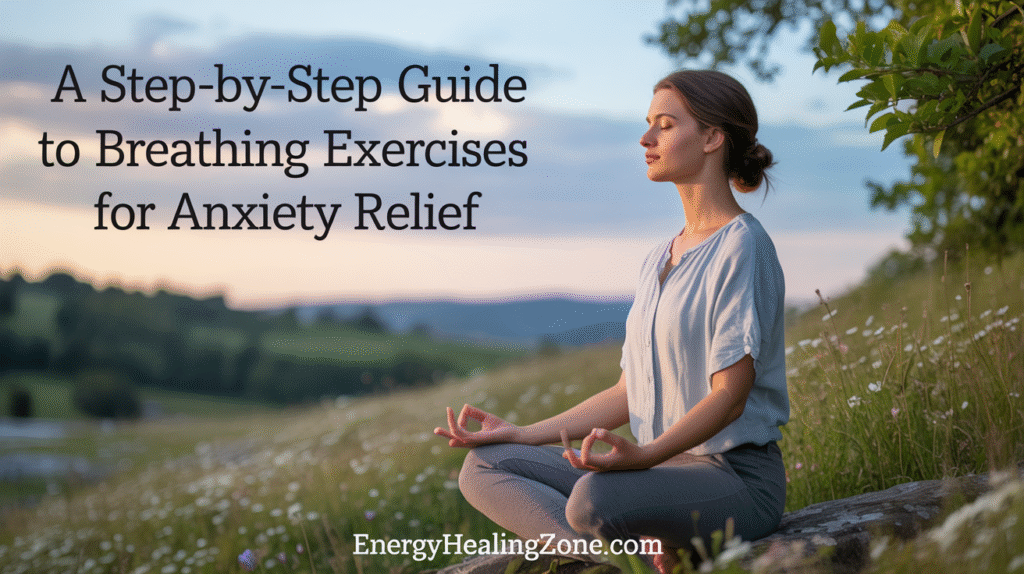
Breathing exercises for anxiety
- How to reduce anxiety with breathing
- Best breathwork for stress relief
- 4-7-8 breathing for anxiety
- Instant anxiety relief techniques


